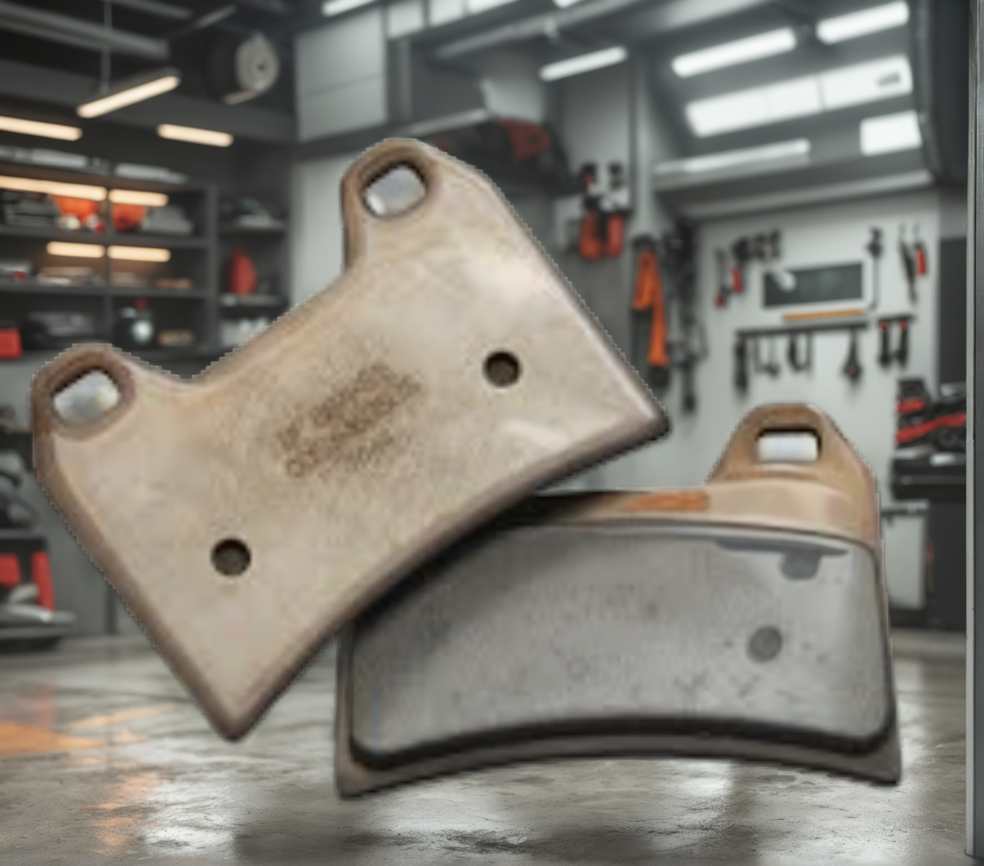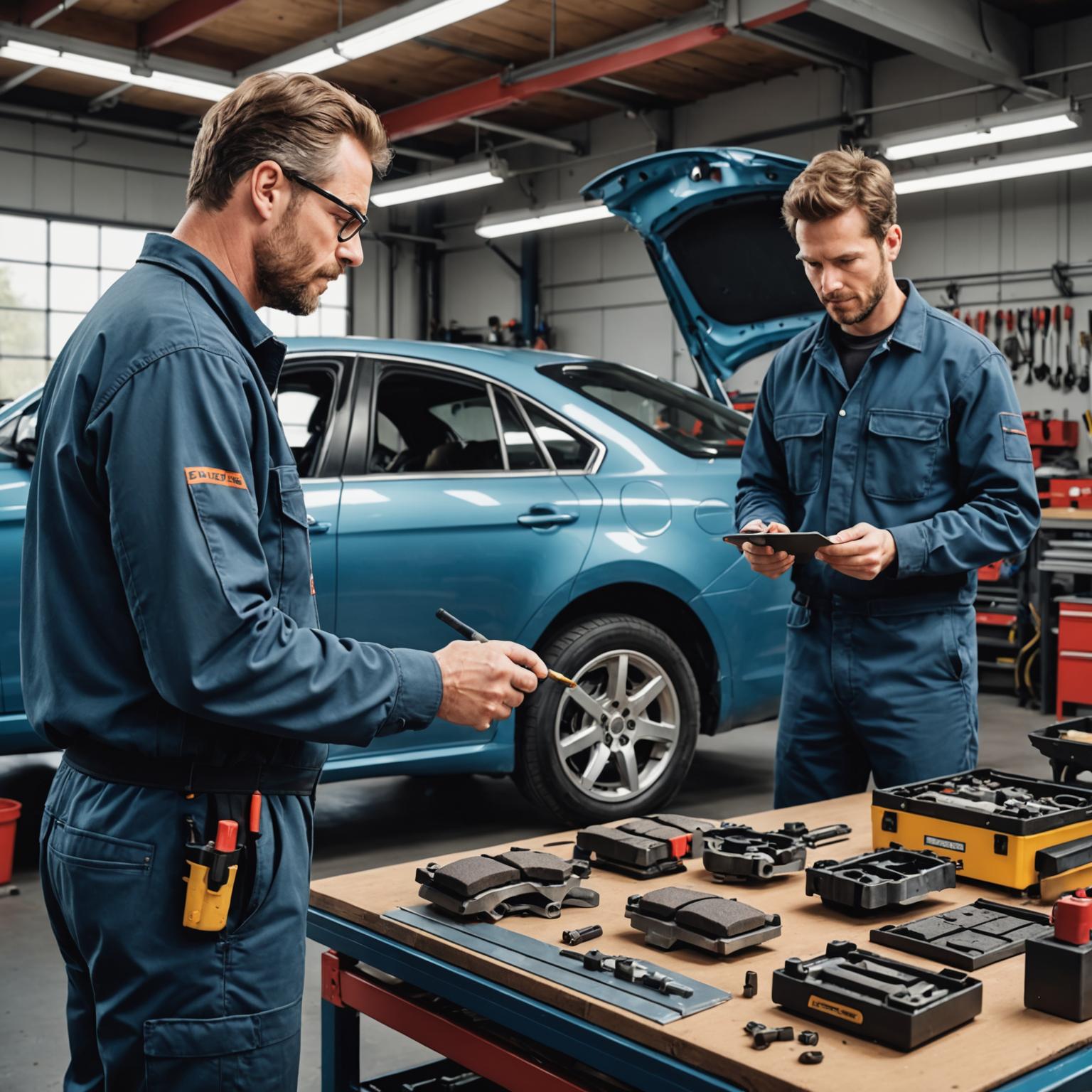The Vital Role of the Brake Pad Motor System
The braking system is arguably one of the most critical safety features in any motorized vehicle, and at its heart often lies the effective operation of the brake pad motor assembly. This intricate system is responsible for decelerating and stopping your vehicle safely and reliably. Understanding the components and maintenance involved, particularly concerning the brake pads themselves, is paramount for every vehicle owner. A well-maintained brake system not only ensures your safety on the road but also contributes to the overall performance and longevity of your vehicle. This article will delve into the essential aspects of motor brake pads, explore the indicators for when a brake pad replacement is necessary, and discuss the advancements in braking technology designed to enhance your driving experience. Ensuring your vehicle’s stopping power is in optimal condition begins with understanding the crucial role of its brake components.

Understanding the Mechanics of Motor Brake Pads
Motor brake pads are fundamental components within the disc brake system, which is prevalent in most modern motorcycles, ATVs, and cars. These pads are specifically designed to create friction against a rotor (or disc) that rotates with the wheel. When you apply the brakes, hydraulic pressure forces the brake calipers to clamp the motor brake pads against the spinning rotor. This friction converts the kinetic energy of the moving vehicle into thermal energy, which then dissipates into the atmosphere, effectively slowing down or stopping the vehicle. Brake pads consist of a steel backing plate and a layer of friction material. The composition of this friction material can vary significantly, including organic, semi-metallic, metallic (like sintered compounds), and ceramic formulations, each offering different characteristics in terms of performance, noise, dust, and wear life. The choice of material often depends on the vehicle type, its intended use, and the driver’s preferences for braking feel and longevity.
The Science Behind Effective Braking
The effectiveness of a braking system, and specifically the brake pads, hinges on the science of friction and heat management. When brake pads engage with the rotor, the amount of friction generated is directly proportional to the stopping force. However, this process generates significant heat. If this heat isn’t managed effectively, it can lead to a phenomenon known as brake fade, where the pads overheat and lose their ability to create sufficient friction, resulting in a dangerous reduction in braking power. Modern brake pad designs and materials focus heavily on thermal resistance and efficient heat dissipation. For instance, sintered metallic compounds are known for their exceptional ability to perform consistently even under high-temperature conditions, making them ideal for demanding applications. The design of the entire brake assembly, including ventilated rotors and caliper design, also plays a crucial role in managing the heat generated during braking and maintaining consistent performance.
Recognizing the Telltale Signs for Brake Pad Replacement
Knowing when to opt for a brake pad replacement is crucial for vehicle safety and preventing more costly damage to the braking system. Several telltale signs indicate that your brake pads are nearing the end of their service life. One of the most common indicators is an audible high-pitched squealing or screeching noise when the brakes are applied. This sound is often caused by a small metal wear indicator built into the brake pad, which contacts the rotor when the friction material is worn down to a certain level. Another alarming sound is a grinding noise, which typically means the friction material is completely worn away, and the metal backing plate is grinding against the rotor. This can cause severe damage to the rotor, necessitating its replacement as well. Visually, you might be able to inspect the pads through the wheel spokes; if the friction material appears to be less than a quarter-inch thick, it’s generally time for a change. Other symptoms include a pulsating or vibrating brake pedal, the vehicle pulling to one side during braking, or a noticeable increase in the distance required to stop. Many modern vehicles are also equipped with brake wear sensors that trigger a warning light on the dashboard.
The Criticality of Timely Brake Pad Replacement
Postponing a necessary brake pad replacement can have severe consequences, far beyond mere inconvenience. Firstly, and most importantly, worn-out brake pads significantly compromise your vehicle’s stopping power, increasing the risk of accidents. The ability to stop quickly and decisively is paramount in emergency situations, and compromised brakes can be the difference between a close call and a collision. Secondly, continuing to drive with excessively worn pads can lead to extensive and expensive damage to other components of the braking system. As mentioned, if the friction material wears away completely, the metal backing plate of the pad will grind against the brake rotor. This not only destroys the rotor, requiring its resurfacing or replacement, but can also potentially damage the brake caliper. Replacing rotors and calipers is significantly more expensive than simply replacing the brake pads. Therefore, timely replacement is a cost-effective measure in the long run, ensuring the longevity of the entire braking system and maintaining optimal vehicle performance and safety.
Pioneering Advancements in Brake Pad Technology
The evolution of brake pad technology continues to push the boundaries of performance, safety, and durability, especially critical for sophisticated brake pad motor systems. Modern engineering has led to the development of high-performance brake pads that offer superior stopping power and resilience. An exemplary innovation is the use of sintered metallic compounds for the friction surface. These materials are manufactured by fusing metallic particles under high heat and pressure, resulting in a pad that boasts unparalleled thermal resistance. This means they can withstand extreme temperatures generated during aggressive or sustained braking, delivering consistently smooth and reliable performance without succumbing to brake fade. Furthermore, the construction of the backing plate has seen advancements, with designs featuring durable, corrosion-proof metal. This ensures not only longevity but also seamless integration and optimal alignment within contemporary braking systems, sometimes facilitated by innovative alignment holes. Reinforced tabs secure the pad firmly, enhancing stability and reducing noise. These advanced pads are engineered for riders and drivers who demand precision control, responsive feedback, and a quiet, confident braking experience, whether navigating challenging terrains or enjoying spirited drives. The sleek, streamlined finish often complements their functional superiority with a touch of visual appeal.
Navigating the Brake Pad Replacement Process
Undertaking a brake pad replacement involves several meticulous steps to ensure the braking system functions correctly and safely afterward. While some mechanically inclined individuals might opt for a DIY approach, many prefer the expertise of a qualified mechanic. The typical process begins with safely jacking up the vehicle and removing the wheels to access the brake assemblies. The mechanic will then unbolt and remove the brake caliper, allowing the old brake pads to be taken out. Before installing the new pads, it’s crucial to inspect the brake rotors for any signs of damage, such as scoring, warping, or excessive wear. Rotors may need to be resurfaced or replaced if they are not in good condition. The caliper pistons are then compressed to make space for the thicker new pads. The new motor brake pads are installed, usually with fresh hardware like clips or shims, and the caliper is reassembled and torqued to the manufacturer’s specifications. After repeating the process for all necessary wheels, the brake fluid level is checked and adjusted if needed. A critical final step is “bedding-in” the new pads, which involves a specific series of controlled stops to properly mate the new pad material to the rotor surface, ensuring optimal performance and longevity.
Selecting the Ideal Motor Brake Pads for Your Needs
Choosing the right motor brake pads is not a one-size-fits-all decision; it depends heavily on your specific vehicle, your driving style, and the conditions you typically encounter. For instance, a daily commuter car will have different braking requirements than a high-performance sports car or an off-road ATV. When selecting new pads, consider the Original Equipment Manufacturer (OEM) specifications as a baseline. OEM pads are designed to provide a balanced performance suitable for the vehicle’s intended general use. However, aftermarket options can offer enhanced characteristics, such as improved stopping power, longer life, reduced noise, or less brake dust, depending on their formulation. Pads made from sintered metallic compounds, for example, are often favored for motorcycles and high-performance applications due to their excellent heat resistance and consistent stopping power under demanding conditions. Conversely, ceramic pads might be chosen for their quiet operation and low dust production. It’s essential to invest in quality pads from reputable manufacturers, as brakes are a critical safety component. Consulting your vehicle’s manual or a trusted mechanic can provide valuable guidance in making an informed choice that aligns with your performance expectations and safety requirements for your brake pad motor.
Proactive Measures for Extending Brake Pad Longevity
While brake pads are inherently wear items, certain driving habits and maintenance practices can significantly influence their lifespan. One of the most effective ways to prolong the life of your motor brake pads is to adopt a smoother driving style. Avoid aggressive, last-minute braking whenever possible. Anticipating traffic flow and coasting to slow down before applying the brakes reduces the workload on the pads. Similarly, maintaining a safe following distance gives you more time to react and brake gently. Overloading your vehicle also puts extra strain on the braking system, leading to faster pad wear. Regular inspection of your braking system, as part of routine vehicle maintenance, is crucial. This allows for early detection of any issues, not just with the pads but also with rotors, calipers, and brake fluid. Ensuring the brake fluid is at the correct level and in good condition is also important, as it plays a vital role in the hydraulic operation of the brakes. By being mindful of these factors, you can help maximize the service life of your brake pads, ensuring consistent performance and potentially delaying the need for frequent replacements.
Conclusion: Prioritizing Safety and Performance Through Brake Care
The integrity of your vehicle’s braking system, particularly the efficiency of the brake pad motor components, is non-negotiable for ensuring safety on the road. From understanding the fundamental mechanics of how brake pads work to recognizing the critical signs that indicate a replacement is due, informed vehicle ownership empowers you to take proactive steps towards maintaining optimal stopping power. Investing in high-quality motor brake pads, engineered with advanced materials and design features, can significantly enhance braking performance, durability, and the overall driving experience. Coupled with timely brake pad replacement and mindful driving habits, these measures contribute not only to your safety and that of others but also to the longevity and reliability of your vehicle. Regular checks and a commitment to using appropriate, high-standard components are investments that pay dividends in peace of mind and dependable performance every time you engage the brakes.

